Australia is home to nearly 20,000 species of butterflies and moths. Butterflies and moths are majestic, winged creatures that inspire positive feelings when you see them flittering and fluttering around. It’s easy to forget that all butterflies and moths begin as caterpillars, undergoing extensive transformation before embodying their beautiful wings.
Female butterflies and moths lay their eggs on host plants that are uniquely compatible with their species. Incubation times vary among species but once hatched each larval caterpillar goes through several transformative stages known as instars. This article will take a closer look at eight caterpillars commonly found in Australia.
1. Orchard Swallowtail Butterfly Caterpillar
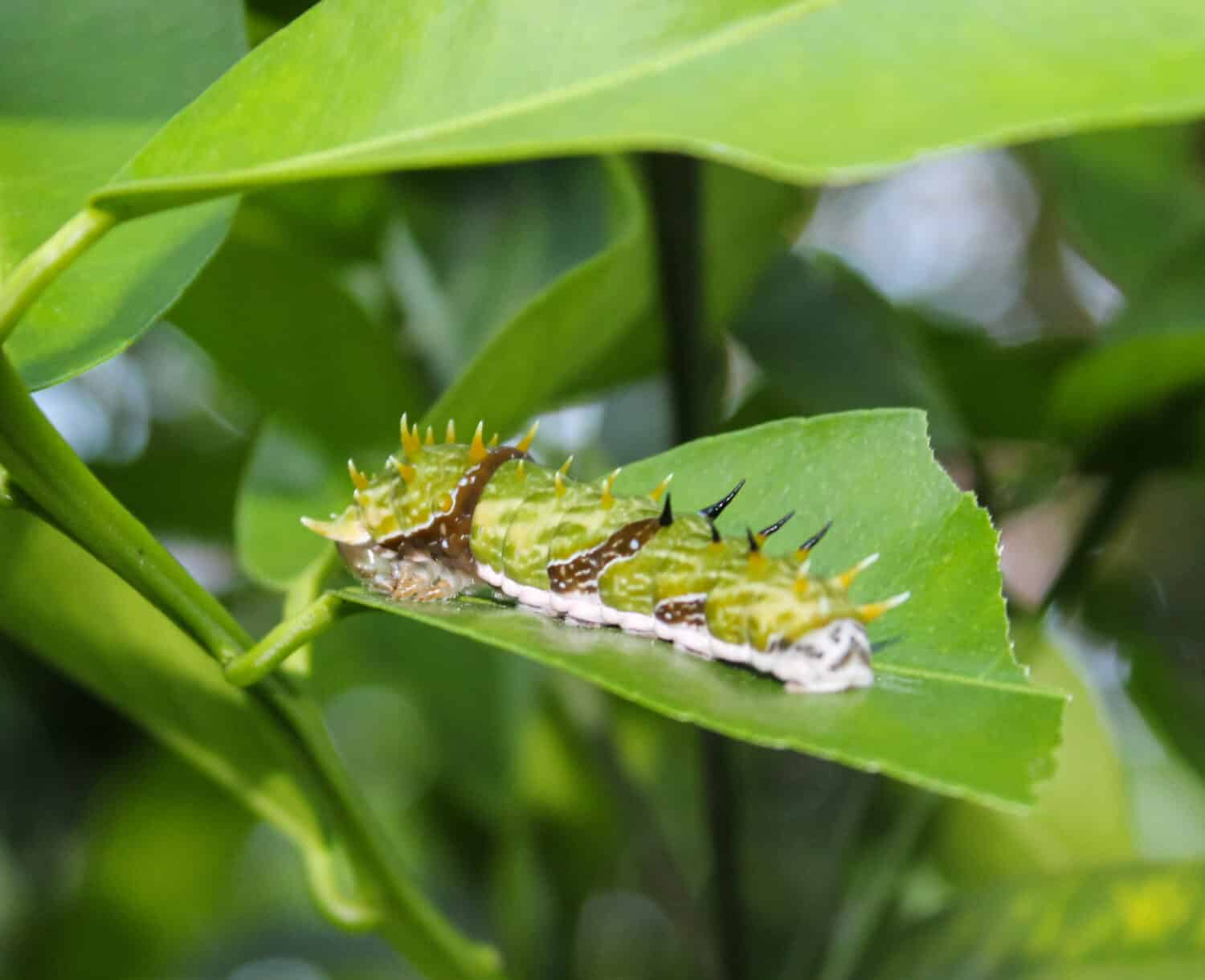
Feeding on the leaves of a citrus plant is the orchard swallowtail caterpillar. The spikes are visible in the last stage instar before pupation.
©Cassandra Madsen/Shutterstock.com
The orchard swallowtail caterpillar is commonly found all over Australia. The caterpillars feed on various citrus tree leaves and are perceived by some as a threat. To disguise themselves from predators these caterpillars look like bird droppings in their early instars, this helps them camouflage themselves on the leaves that they feed from. Once they have reached their final instar stage, they turn green with protective spikes all along their abdomen. After approximately four weeks as a caterpillar, they are ready to pupate.
2. White Cabbage Moth Caterpillar
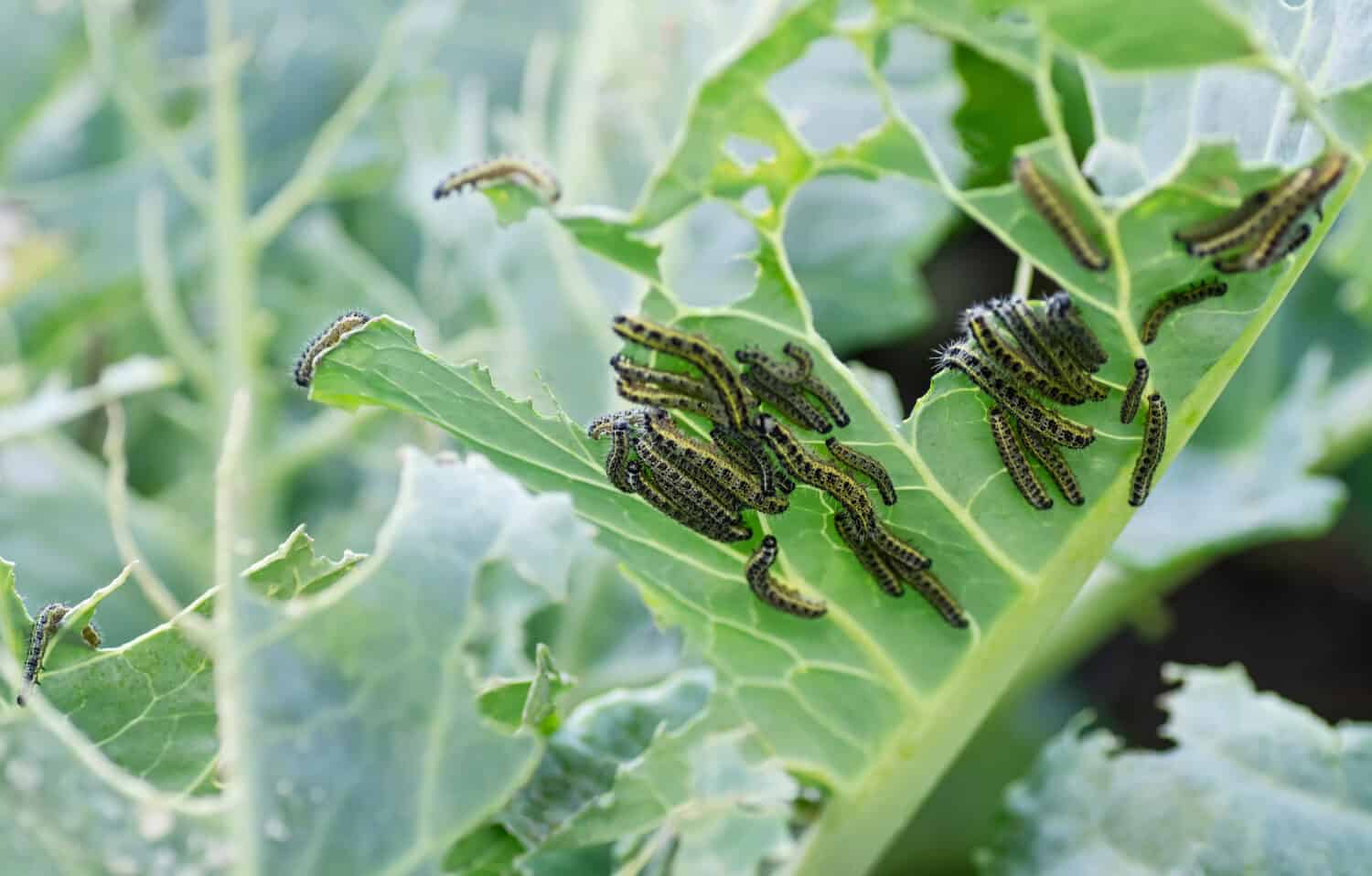
The white cabbage moth lays dozens of eggs at a time which can often cause havoc on farmers’ crops.
©Elena_Gr/Shutterstock.com
Accidentally introduced to Australia and New Zealand in the early 1900s is the white cabbage moth caterpillar. These creatures feast on cabbage leaves and are unfortunately seen as a garden pest. The tiny green insects can hide on the underside of cabbage leaves which protects them from predators.
3. Black Jezebel Butterfly Caterpillar
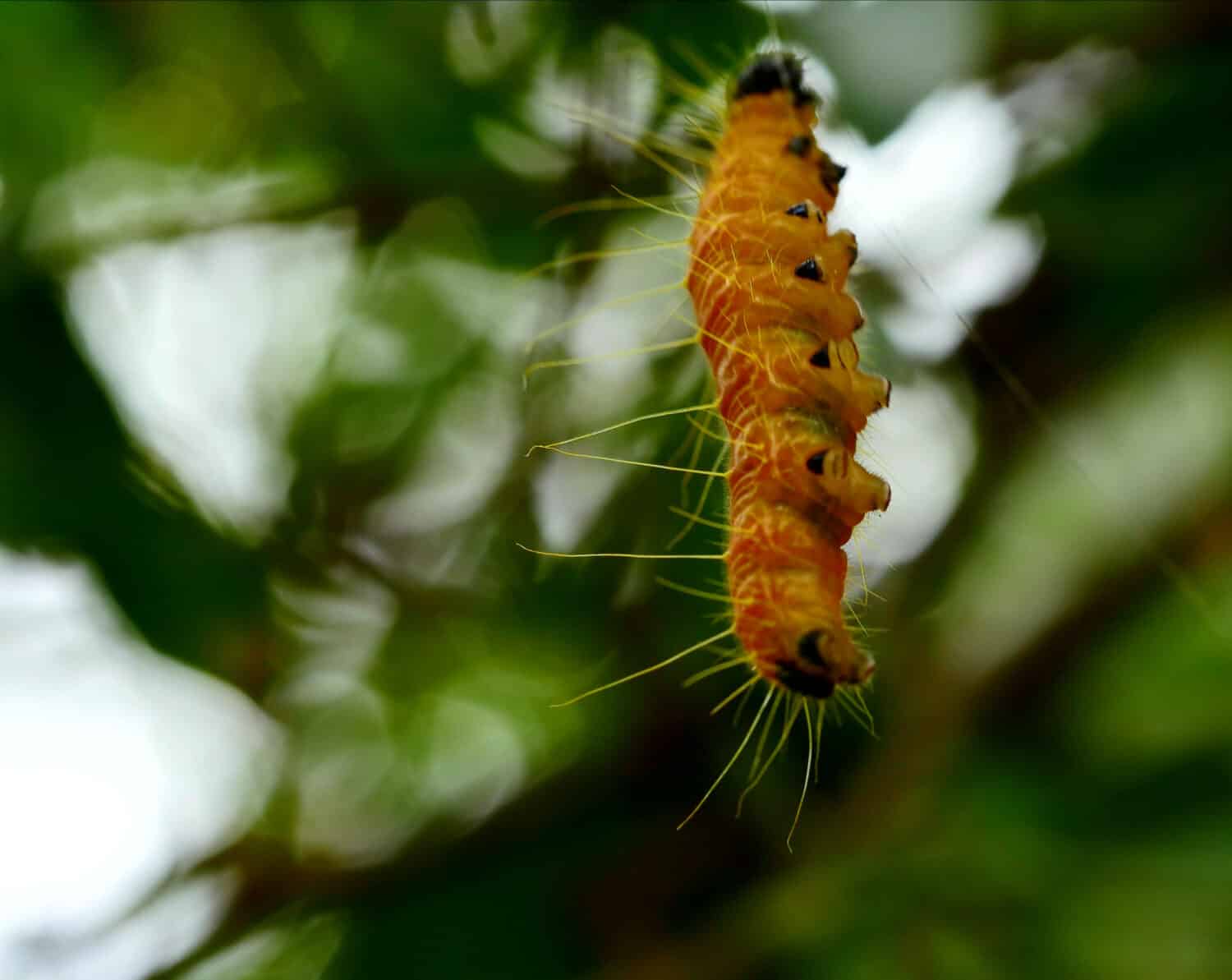
After reaching their final instar, caterpillars will anchor themselves and enter the “j” formation. They will hang upside in “j” for 24 – 48 hours before pupating.
©Huaykwang/Shutterstock.com
There are several species of Jezebel butterflies in the world, but the black Jezebel is the one that is native to Australia. The caterpillars of this species feed on the various varieties of mistletoe plants found in the Queensland, New South Wales, and Victoria provinces. After their first instar phase, these caterpillars are covered in spikes to help protect them. Once pupated their chrysalis is a beautiful yellow color with black dots.
4. Citrus Swallowtail Butterfly Caterpillar
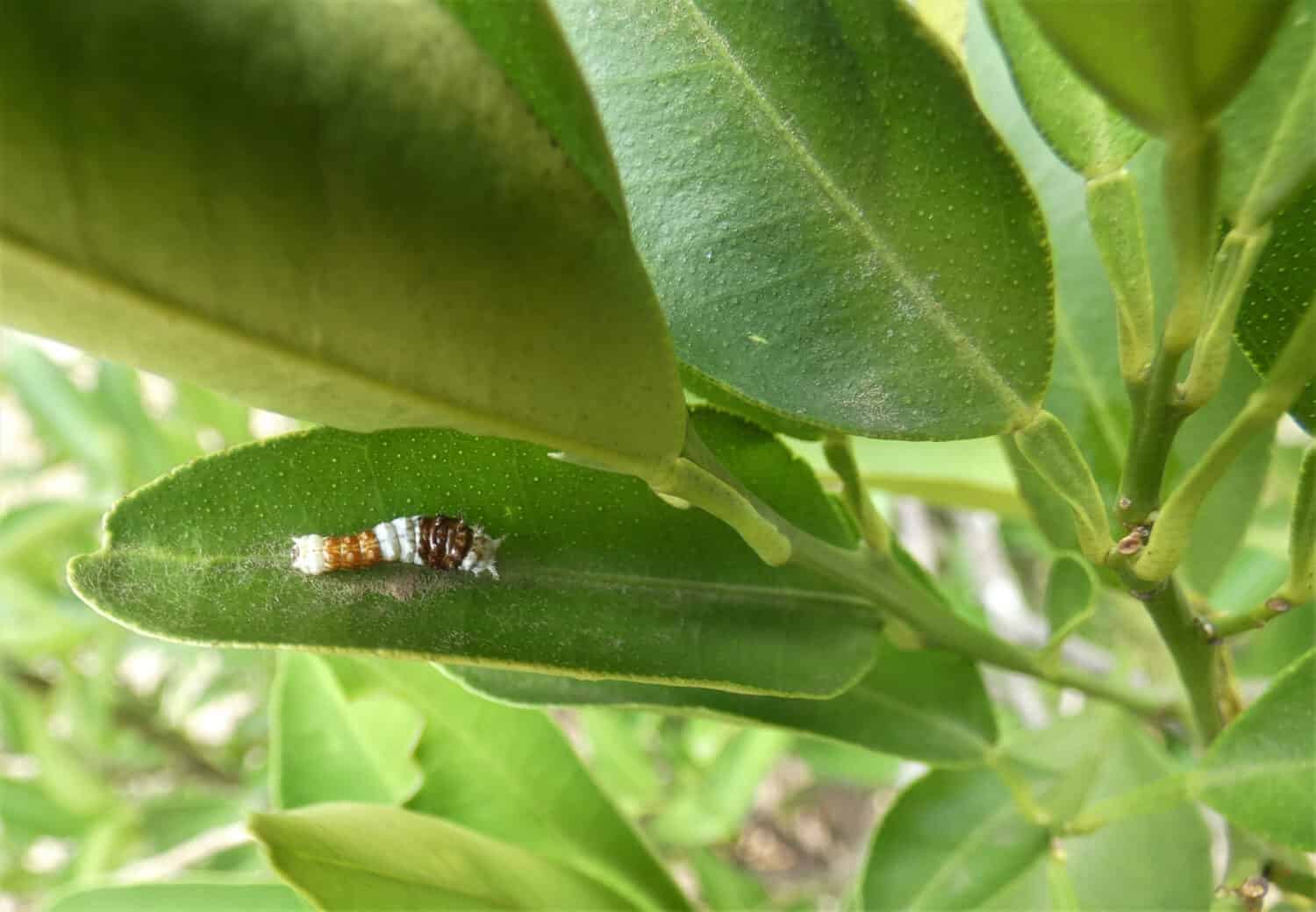
As a means of disguising itself from predators early instar phases of the citrus swallowtail caterpillar resemble bird droppings.
©Sharon Kennedy/Shutterstock.com
Often referred to as a common lime butterfly, the citrus swallowtail caterpillar is another species that looks like bird droppings in its early instars. As it progresses past its fifth instar phase the creature takes on an entirely different look. They become bright green with a tapered end. To help ward off predators, like parasitic wasps, they have two projections at either end of their body.
Citrus swallowtail caterpillars live approximately 28 days from hatching through larval stages to pupa. Once hatched the citrus swallowtail butterfly has one of the shortest life spans only living seven days or less.
5. Tailed Emperor Butterfly Caterpillar

Two distinctive sets of horns adorn the head of the tailed emperor caterpillar.
©Pedro Luna/Shutterstock.com
The caterpillars of the Tailed emperor butterfly are some of the most unique looking among all species. Once they have passed their first instar stage the caterpillars exhibit two distinct sets of horns on their head. Their bright green color and horns help them easily hide in foliage to thwart predators. In the final instar stage before pupation, these caterpillars have yellow stripes which provide contrast against their green bodies.
6. Cairns Birdwing Butterfly Caterpillar
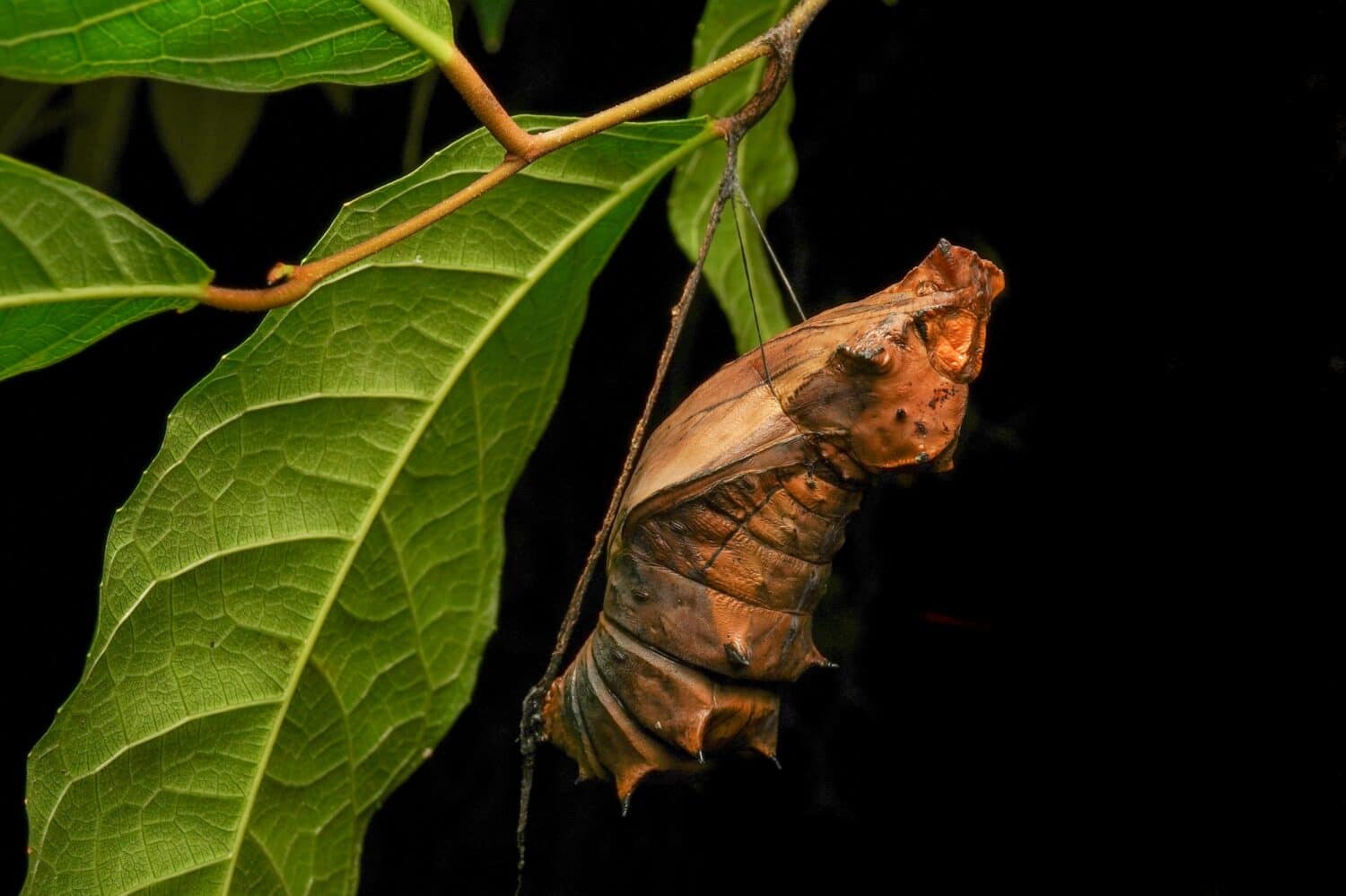
The Cairns birdwing anchors itself to a nearby leaf for its chrysalis stage.
©Kat Hoogstra/Shutterstock.com
Every female Cairns birdwing butterfly can lay up to 300 eggs in her lifetime, making them one of Australia’s most prevalent endemic species. Once hatched the caterpillars feed on native Dutchman’s vine or Indian birthwort which is a poisonous plant. These caterpillars are brown-grey during early instar phases with long brown and orange spikes presenting in their final instar stages before pupation.
7. Painted Vine Moth Caterpillar

Before reaching its final instar the painted vine moth exhibits brown, white, and orange markings.
©DMV Photography/Shutterstock.com
The nickname for the painted vine moth is a Joseph’s Coat moth due to their bright stripes, like the story about Joseph’s coat of many colors from the Bible. These black, white, and orange-striped caterpillars have distinct orange-red feet. From head to thorax these caterpillars are covered in pairs of black antennae. By the time they pupate, these caterpillars can reach a size of up to seven centimeters. When the caterpillar has reached the pupate stage, it will chew on the bark of host trees for hours to create a disguise for its cocoon.
8. Mottled Cup Moth Caterpillar

When relaxed the stinging nettles of the mottled cup moth caterpillar are not visible.
©Wright Out There/Shutterstock.com
Thousands of caterpillar species pose no threat to humans, there are many caterpillars that can sting humans and the mottled cup moth caterpillar is one of them. Their scientific name directly translates to “bearer of gifts of wounds”. Found along Australia’s east coast the mottled cup caterpillar has dozens of spines laced with a highly potent venom that can inflict a sharp, burning sting like a bee. Scientists have studied their venom and discovered over 150 individual toxins in it. While these creatures are uniquely beautiful with their array of colors, it is best to stay clear of the stinging nettles that are presented along their abdomen.
| Species Common Name | Region of Australia |
|---|---|
| Orchard Swallowtail | Eastern |
| White Cabbage | Southeastern |
| Black Jezebel | Eastern Seaboard |
| Citrus Swallowtail | Southern |
| Tailed Emperor | Southeastern |
| Cairns Birdwing | Northeastern |
| Painted Vine Moth | Eastern Seaboard |
| Mottled Cup Moth | Southeastern |
The photo featured at the top of this post is © Pedro Luna/Shutterstock.com
Thank you for reading! Have some feedback for us? Contact the AZ Animals editorial team.






